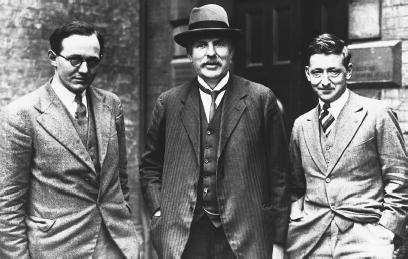Alkali Metals - How it works
Electron Configuration of the Alkali Metals
In the essay on Families of Elements, there is a lengthy discussion concerning the relationship between electron configuration and the definition of a particular collection of elements as a "family." Here that subject will only be touched upon lightly, inasmuch as it relates to the alkali metals.
All members of Group 1 on the periodic table of elements have a valence electron configuration of s 1 . This means that a single electron is involved in chemical bonding, and that this single electron moves through an orbital, or range of probabilities, roughly corresponding to a sphere.
Most elements bond according to what is known as the octet rule, meaning that when two or more atoms are bonded, each has (or shares) eight valence electrons. It is for this reason that the noble gases, at the opposite side of the periodic table from the alkali metals, almost never bond with other elements: they already have eight valence electrons.
The alkali metals, on the other hand, are quite likely to find "willing partners," since they each have just one valence electron. This brings up one of the reasons why hydrogen, though it is also part of Group 1, is not included as an alkali metal. First and most obviously, it is not a metal; additionally, it bonds according to what is called the duet rule, such that it shares two electrons with another element.
Chemical and Physical Characteristics of the Alkali Metals
The term "alkali" (essentially the opposite of an acid) refers to a substance that forms the negatively charged hydroxide ion (OH−) in contact with water. On their own, however, alkali metals almost always form positive ions, or cations, with a charge of +1.
When alkali metals react with water, one hydrogen atom splits off from the water molecule to form hydrogen gas, while the other hydrogen atom joins the oxygen to form hydroxide. Where the heavier members of the alkali metal family are concerned, reactions can often be so vigorous that the result is combustion or even explosion. Alkali metals also react with oxygen to produce

Shiny and soft enough to be cut with a knife, the alkali metals are usually white (though cesium is more of a yellowish white). When placed in a flame, most of these substances produce characteristic colors: lithium, for instance, glows bright red, and sodium an intense yellow. Heated potassium produces a violet color, rubidium a dark red, and cesium a light blue. This makes it possible to identify the metals, when heated, by color—a useful trait, since they are so often inclined to be bonded with other elements.
MELTING AND BOILING POINTS.
As one moves down the rows or periods of the periodic table, the mass of atoms increases, as does the energy each atom possesses. Yet the amount of energy required to turn a solid alkali metal into a liquid, or to vaporize a liquid alkali metal, actually decreases with higher atomic number. In other words, the higher the atomic number, the lower the boiling and melting points.
The list below lists the six alkali metals in order of atomic number, along with chemical symbol, atomic mass, melting point, and boiling point. Note that for francium, which is radioactive, the figures given are for its most stable isotope, francium-223 ( 223 Fr)—which has a half-life of only about 21 minutes.

Atomic Number, Mass, and Melting and Boiling Points of the Alkali Metals:
- 3. Lithium (Li), 6.941; Melting Point: 356.9°F (180.5°C); Boiling Point: 2,457°F (1,347°C)
- 11. Sodium (Na), 22.99; Melting Point: 208°F (97.8°C); Boiling Point: 1,621.4°F (883°C)
- 19. Potassium (K), 39.10; Melting Point: 145.9°F (63.28°C); Boiling Point: 1,398.2°F (759°C)
- 37. Rubidium (Rb), 85.47; Melting Point: 102.8°F (39.31°C); Boiling Point: 1,270.4°F (688°C)
- 55. Cesium (Cs), 132.9; Melting Point: 83.12°F (28.4°C); Boiling Point: 1,239.8°F (671°C)
- 87. Francium (Fr), (223); Melting Point: 80.6°F (27°C); Boiling Point: 1,250.6°F (677°C)
Abundance of Alkali Metals
Sodium and potassium are, respectively, the sixth and seventh most abundant elements on Earth, comprising 2.6% and 2.4% of the planet's known elemental mass. This may not seem like much, but considering the fact that just two elements—oxygen and silicon—make up about 75%, and that just 16 elements make up most of the remainder, it is an impressive share.
Lithium, on the other hand, is much less abundant, and therefore, figures for its part of Earth's known elemental mass are measured in parts per million (ppm). The total lithium in Earth's crust is about 17 ppm. Surprisingly, rubidium is more abundant, at 60 ppm; less surprisingly, cesium, with just 3 ppm, is very rare. Almost no francium is found naturally, except in very small quantities within uranium ores.
Comment about this article, ask questions, or add new information about this topic: